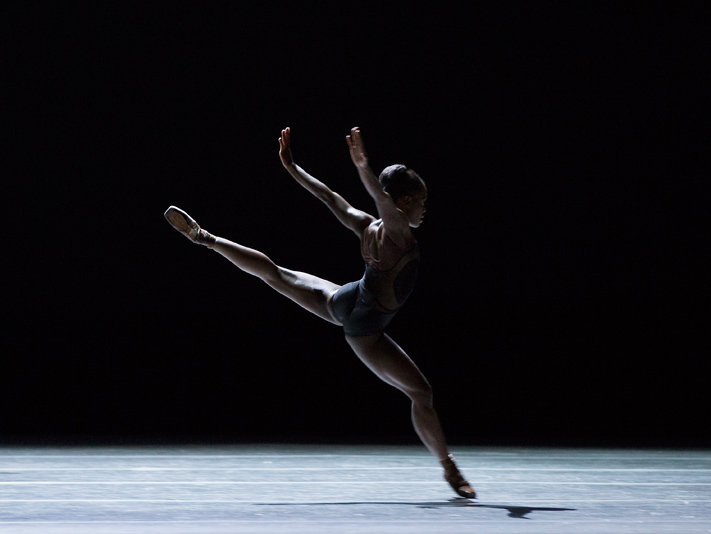Black ballet dancers are not widely spoken about. Most of the genres of dancing which feature women of color are the mainstream ones we see on social media and on our television sets. The following ballet dancers dare to be great in a world where dancing is so rigid, many do not make the cut. Here are the ballet dancers you need to fix your eyes on.
Michaela DePrince
This Sierra-Leonean beauty was born Mabinty Bangura. She was briefly raised as a Muslim however, became an orphan when the civil war in Sierra Leone started. When the orphanage she was living in was bombed, she escaped to a refugee camp. After attending high school in the United States, she concurrently studied at The Rock School for Dance Education in Philadelphia, Pennsylvania. Afterwards, she was granted a scholarship to the American Ballet Theatre’s Jacqueline Kennedy Onassis School of Ballet. She often faced immense discrimination; being told that “America isn’t ready for a black ballerina.” In 2011, she debuted in ‘Abdallah and the Gazelle of Basra’ making that her first European appearance. After graduating in 2012 from the American Ballet Theatre, she joined the Dance Theatre of Harlem. In 2013, DePrince relocated to Amsterdam and became a member of the Dutch National Ballet. In 2016, she was promoted to grand sujet, and then to soloist at the end of the year.
Eric Underwood
Underwood was born in a suburb of Washington, D.C. At the age of 14, he began his training as a dancer and by the end of the year was under the direction of the American Ballet. In 2000, He became a student at the Dance Theater of Harlem and was promoted to a soloist several months later. In 2003 he joined the American Ballet Theater. In 2006 he became a member of the Royal Ballet in 2006; again he rose to the ranks of soloist in 2008. `In 2017 he parted ways with the Royal Ballet. Underwood has now undertaken the world of modeling and movement directing.
Misty Copeland
Copeland was born in Kansas City, Missouri. She began her studies in Ballet in 1996 after being convinced to attend a dance class. She was further urged due to her mother and older sister’s long work days. After studying for three months, she became efficient at en pointe. In 2000 she joined the American Ballet Theater studio company and in 2001 became a member of the Corps de ballet. After a delayed onset of puberty and taking birth control to induce puberty, Copeland developed a binge-eating disorder. The new development of her body coupled with the stress of societal pressures of how a ballerina is “supposed to look” left Copeland feeling unconfident. She decided, in turn, to build her strength and in doing so changed the aesthetic pressures placed on ballet dancers. She felt comfortable in her skin again. In 2007, she was appointed as a soloist at ABH. As of 2008, Copeland has been the only African-American woman dancer since the inception of her career; the three other African-American dancers have since left the company. In 2014 she became the only African-American woman to perform the role of Swanilda in Coppelia at the MET. In 2015, Copeland became the first Black woman to be promoted to principal ballerina in the 75 years of ABH’s founding. In 2017, she danced with the La Scala Theatre Ballet.
Lauren Anderson
Born in 1965, Anderson started dancing at the age of 18 at the Houston Ballet. In 1990, she became a principal dancer. This enabled her to become the second Black female dancer to be promoted to principal dancer at a premier American ballet company. Anderson retired from dancing in 2006; she has gone on to become an outreach associate in Houston’s ballet education department, a lecturer on the topic of ballet dance, and conducts master classes throughout the Houston educational districts.
Fredrick Davis
Named Fredrick Eric Davis, he was born in Brooklyn, New York and later relocated to Tennessee. Davis battled poverty and homelessness as a youth, nonetheless, things turned around for the better in 1998. It was then he began dancing in a city-funded program that worked in conjunction with Ballett Tennessee. After graduating in 2004, he was encouraged to join the Joffrey Ballet School where he stayed until 2007. While at Joffrey, he studied at the American Ballet Theatre, Boston Ballet, and the North Carolina Dance Theatre respectively. In 2008, Davis danced briefly with the Roxey Ballet Company before joining the Dance Theatre of Harlem. In 2015, he left the Dance Theatre of Harlem and convened on a dance for America tour. He is now a principal guest artist at Ballet Tennessee and at Ballet Tucson.
All of these artists represent proof that forging your own path can produce great results. Black artists are more than capable of reaching the stars and beyond, even against the odds.
